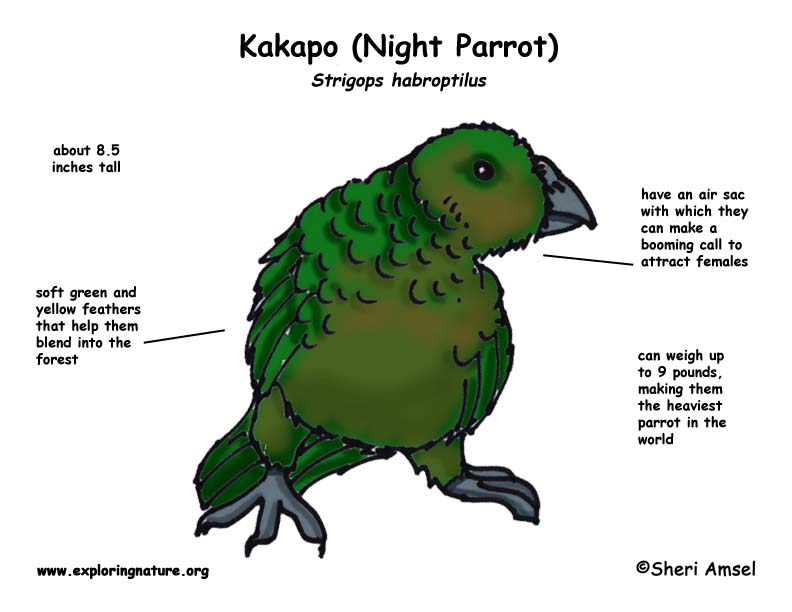

They are found on the islands off the coast of New Zealand.
They live in the coastal forests.
They have soft green and yellow feathers that help them blend into the forest. They are about 8.5 inches tall and can weigh up to 9 pounds, making them the heaviest parrot in the world. They have an air sac with which they can make a booming call to attract females. They are the only parrot that can do this.
They cannot fly (they may be the world’s only flightless parrot), but they can climb trees. They are active at night (nocturnal). Man was their most dangerous predator until rats, weasels (stoats) and housecats were brought to New Zealand. They are very endangered.
They eat fruits, roots and leaves.
They nest on the ground, the males making a hollow in the ground and calling for a female. They don’t breed every year.
Kingdom: Animalia
Phylum: Chordata
Subphylum: Vetebrata
Class: Aves
Order: Psittaciformes
Family: Strigopidae
Genus: Strigops
Species: S. habroptila
When you research information you must cite the reference. Citing for websites is different from citing from books, magazines and periodicals. The style of citing shown here is from the MLA Style Citations (Modern Language Association).
When citing a WEBSITE the general format is as follows.
Author Last Name, First Name(s). "Title: Subtitle of Part of Web Page, if appropriate." Title: Subtitle: Section of Page if appropriate. Sponsoring/Publishing Agency, If Given. Additional significant descriptive information. Date of Electronic Publication or other Date, such as Last Updated. Day Month Year of access < URL >.
Amsel, Sheri. "Kakapo (Night Parrot)" Exploring Nature Educational Resource ©2005-2024. December 14, 2024
< http://www.exploringnature.org/db/view/Kakapo-Night-Parrot >

